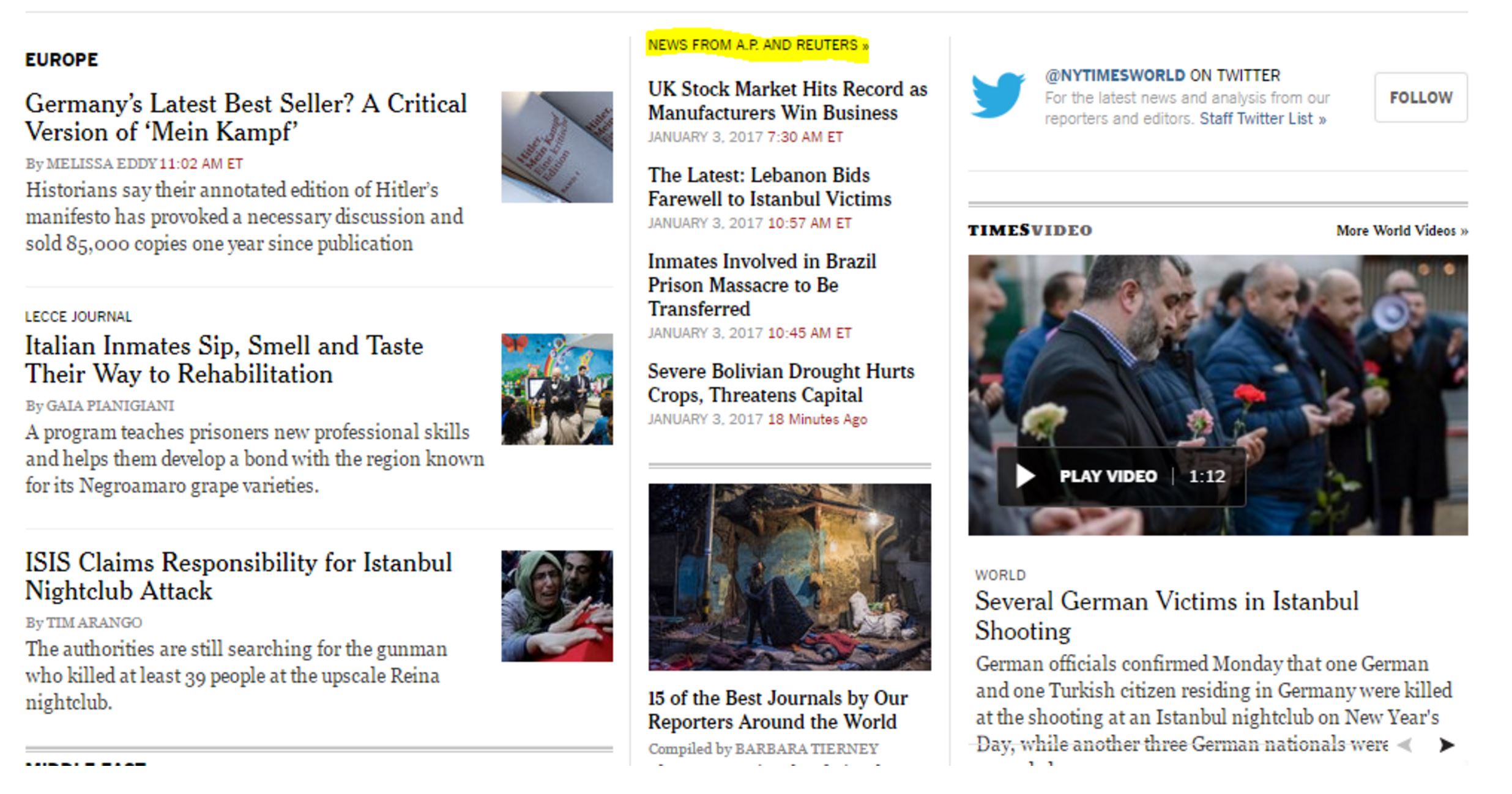10 Understanding Syndication
Dictionary.com defines a “syndicate” in journalism as an agency that buys articles, stories, columns, photographs, comic strips, or other features. It distributes them for simultaneous publication in a number of newspapers or periodicals in different localities.
Consider this New York Times web page:

In the left column (above), there are a set of stories – “Germany’s Latest Best Seller?” & “Isis Claims Responsibility” written by New York Times staff.
In the middle column, there are stories – “UK Stock Market Hits Record” & “The Latest: Lebanon Bids Farewell to Istanbul Victims” that are identified as being from the Associated Press and Reuters. You click through to a page that’s on the New York Times site, but not by the New York Times.

To evaluate the source of these articles, your evaluation will not focus on the New York Times. You will focus on the reporting record of the Associated Press and Reuters.
For example, if you are a reader of online news, you may notice that an article critical of a politician or policy suddenly disappears from a news site. The story that disappeared is most likely a syndicated article. Associated Press articles, for example, are displayed on the site for a few weeks, then “roll off” and disappear from the site. Why? Because the New York Times only pays the Associated Press to show them on the site for a few weeks.
You will also occasionally see people complaining about a story from the New York Times, claiming it shows a New York “liberal bias” only to find the story was not even written by the New York Times, but by the Associated Press, Reuters, or some other syndicator.
Finding the source means following a piece of content to its true source, and beginning your analysis there. Your first question when looking at a claim on a page should be “Where did this come from, and who produced it?”

